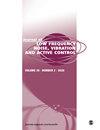轴向分布热源的rijke型热声系统稳定性研究
IF 2.4
4区 工程技术
Q1 ACOUSTICS
Journal of Low Frequency Noise Vibration and Active Control
Pub Date : 2023-09-07
DOI:10.1177/14613484231200854
引用次数: 0
摘要
在许多推进系统中,如液体/固体火箭发动机和航空发动机,由于燃烧室的损坏,不希望出现大振幅的自持续热声振荡。为了有效地抑制这些热声振荡,需要澄清热声不稳定的机制。在前人实验工作的基础上,本文对具有轴向分布热源的rijke型热声系统向不稳定的转变进行了数值研究。采用了URANS数值方法,并通过网格灵敏度分析对其进行了验证。研究了轴向分布的加热器长度、加热器位置和平均流速对热声振荡非线性动力学行为的影响。为了探索这些影响背后的相应机制,应用了声能守恒原理。利用瑞利积分对热声耦合的声能增益进行量化,并利用互相关函数计算其相位差。利用Rijke管内流场的特性,定性地分析了涡耗散引起的声阻尼。最后,随着加热器长度、加热器位置或平均流速的变化,确定了rijke型热声系统向不稳定过渡的三种机制。本文章由计算机程序翻译,如有差异,请以英文原文为准。
Investigation on the stability of the Rijke-type thermoacoustic system with an axially distributed heat source
Due to the incurred damages to the combustors, large-amplitude self-sustained thermoacoustic oscillations are unwanted in many propulsion systems, such as liquid/solid rocket motors and aero-engines. To suppress these thermoacoustic oscillations efficiently, the mechanism of thermoacoustic instability needs to be clarified. Following the previous experimental work, the transitions to instability in a Rijke-type thermoacoustic system with an axially distributed heat source are studied numerically in this paper. The URANS numerical method is utilized and verified by means of a mesh sensitivity analysis. The influences of the axially distributed heater length, the heater location, and the mean flow velocity on the nonlinear dynamic behaviors of thermoacoustic oscillations are evaluated. To explore the corresponding mechanism behind these influences, the principle of acoustic energy conservation has been applied. The acoustic energy gains from the thermal-acoustic coupling are quantified via Rayleigh’s integral, and their phase differences are calculated by the cross-correlation function. The acoustic damping induced by the vortex dissipation is qualitatively analyzed by the characteristics of the flow fields in the Rijke tube. Finally, as the heater length, the heater location, or the mean flow velocity is varied, three mechanisms of the transitions to instability in a Rijke-type thermoacoustic system are identified.
求助全文
通过发布文献求助,成功后即可免费获取论文全文。
去求助
来源期刊

Journal of Low Frequency Noise Vibration and Active Control
Engineering-Mechanical Engineering
CiteScore
4.90
自引率
4.30%
发文量
98
审稿时长
15 weeks
期刊介绍:
Journal of Low Frequency Noise, Vibration & Active Control is a peer-reviewed, open access journal, bringing together material which otherwise would be scattered. The journal is the cornerstone of the creation of a unified corpus of knowledge on the subject.
 求助内容:
求助内容: 应助结果提醒方式:
应助结果提醒方式:


